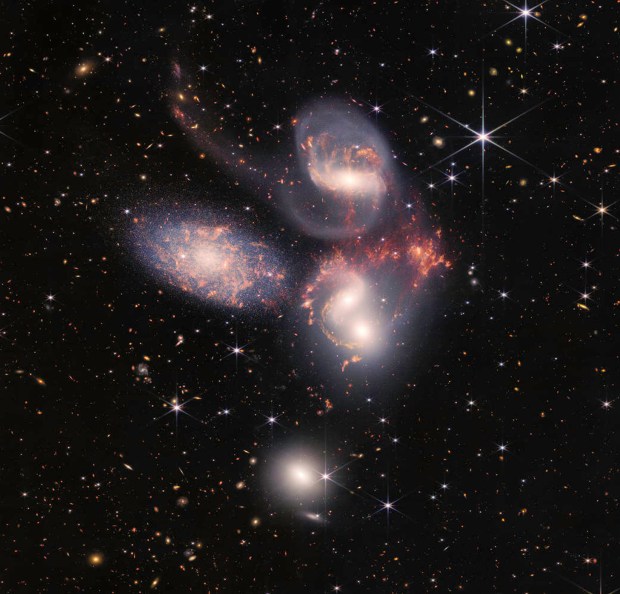
In 1929, Edwin Hubble made a discovery that changed our view of the universe forever. After examining a multitude of spectra from other galaxies, he concluded that the farther away a galaxy was, the faster it was receding. This revelation, now called Hubble’s Law, showed that the universe was expanding.
But there were exceptions. One of the best-known enigmas, Stephan’s Quintet, was discovered in 1877 by Édouard Stephan, former director of Marseille Observatory in France. It lies less than ½° south of the bright, unbarred spiral galaxy NGC 7331 in Pegasus.
The five galaxies that make up Stephan’s Quintet are: elliptical NGC 7317; elliptical NGC 7318A, colliding with barred spiral NGC 7318B; distorted barred spiral NGC 7319; and barred spiral NGC 7320. All are crammed into a tight 20′ area.
Early images of the quintet — such as that used in the 1946 classic film It’s a Wonderful Life to represent talking angels — were low resolution, making it appear as if all five galaxies formed a single, compact group. But spectral data showed otherwise. NGC 7320 is 40 million light-years from Earth, while the other four galaxies are about 290 million light-years away.
Two years ago, NASA released an image of the group taken by the James Webb Space Telescope (JWST). It showed all five in unprecedented detail. The image reveals dazzling clusters of young stars and regions where new stars are being born in a burst of activity. Long, curved tails of star material are being pulled away from the galaxies due to interacting tidal forces. The JWST image also reveals immense shockwaves created as NGC 7318B collides with NGC 7318A.









